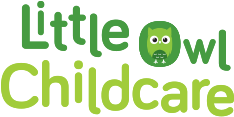Makaton is the use of signs and symbols, along with spoken words, to help support communication. Using signs can help children with no or little speech to communicate their needs. This could be due to a learning disability or for children who are very young and speech might be unclear.
Many children may become frustrated when not been able to communicate effectively. Using simple signs can avoid any upset or confusion. A lot of the time children’s understanding develops before their speech, so you can see how this might cause tantrums or sometimes expressive behaviour as the child more than likely knows what they want but are finding it difficult to communicate this. Using sign can allow children to express their needs, wants and feelings.
Makaton can also help develop speech. Providing children with a form of communication will stimulate the sounds and words that comes with speech.
The symbols in Makaton provides children with a visual image, supporting their understanding of the meaning of words. Symbols are lasting and permanent, giving a child more time to take in information.
At Little Owls we use Makaton throughout the daily routine. All adults use signs while communicating with the children. The children tend to pick this up very quickly and often ask for their needs such as; snack or nappy changing through sign. We find Makaton a very inclusive resource and really supports all of our children with communication, speech and understanding of words.




Recent Comments